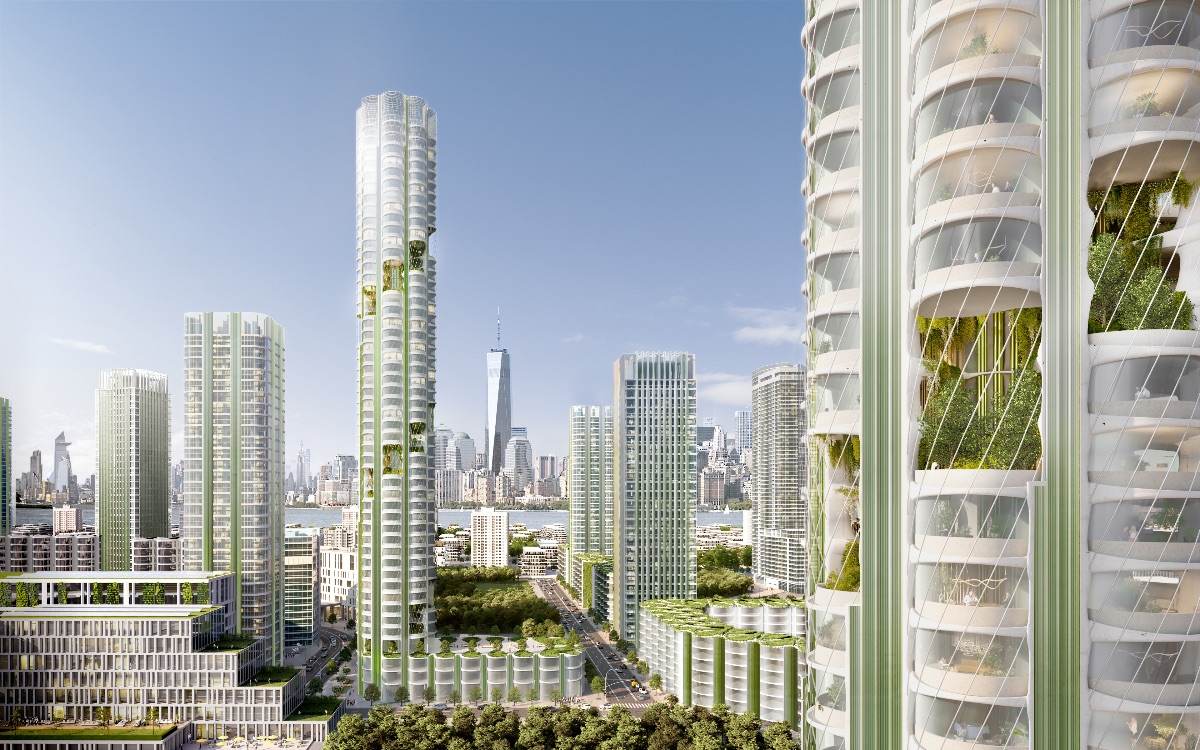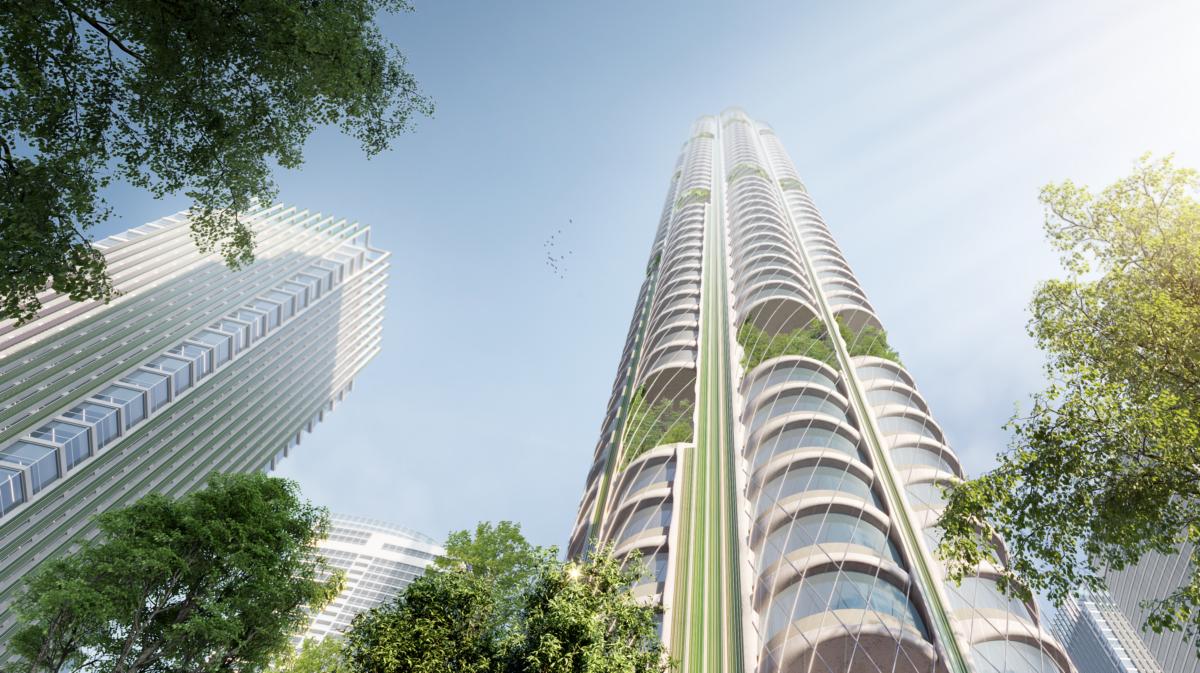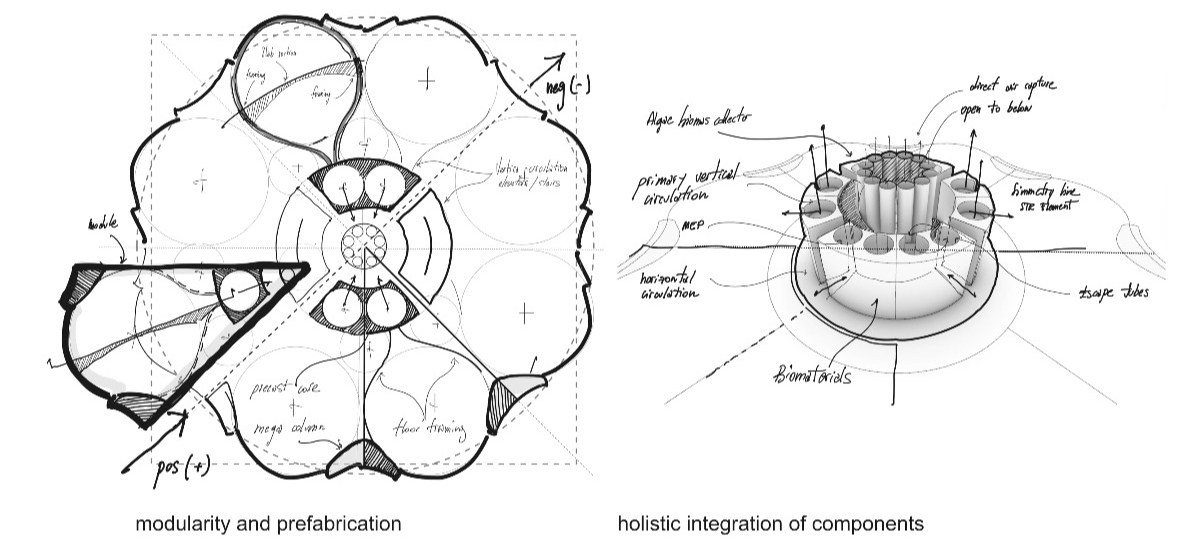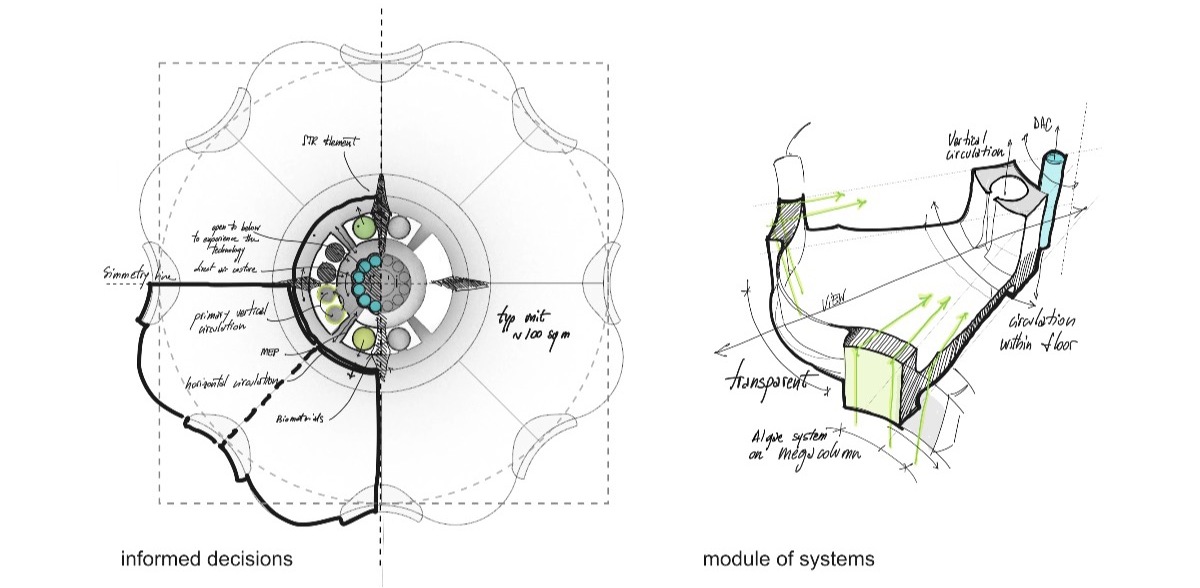What if the built environment could be a solution to
the climate crisis, rather than part of the problem? What if buildings could act
like trees – capturing carbon, purifying the air, and regenerating the
environment? Taking inspiration from natural processes and ecosystems, Urban
Sequoia envisions “forests” of buildings that sequester carbon and produce
biomaterials to create a new carbon economy and a resilient urban environment.
| |
 |
| |
Renderings © SOM | Miysis
|
At
COP26, the 2021 UN Climate Change Conference in Glasgow, Skidmore, Owings &
Merrill (SOM) unveiled Urban Sequoia – a concept for buildings and their urban
context to absorb carbon at an unprecedented rate. SOM has developed the first
step toward achieving this goal on a broad scale, with a prototype for a
high-rise building that can be built today. Created by a global
interdisciplinary team at SOM, with the advice of industry experts, the concept
was presented by Kent Jackson, Partner, and Mina Hasman, Senior Associate
Principal, live at COP26 in the Buildings Pavilion in the Blue Zone.
The need to transform the built environment is clear. The building sector
generates nearly 40 per cent of all global carbon emissions. As urban
populations continue to grow in the coming decades, studies have predicted that
another 230 billion square metres of new building stock will be needed by 2060.
|
 |
|
The central proposition of Urban Sequoia is that the built environment can
absorb carbon. SOM’s proposal transforms buildings into solutions – radically
rethinking how buildings and cities are designed and constructed. It is a viable
solution that could have a far-reaching impact, with the potential to create a
circular economy that absorbs carbon.
Chris Cooper, SOM Partner, explains the strategy: “We are quickly evolving
beyond the idea of being carbon neutral. The time has passed to talk about
neutrality. Our proposal for Urban Sequoia – and ultimately entire ‘forests’ of
Sequoias – makes buildings, and therefore our cities, part of the solution by
designing them to sequester carbon, effectively changing the course of climate
change.”
“This is a pathway to a more sustainable future that is accessible today.
Imagine a world where a building helps to heal the planet,” said Kent Jackson,
Partner at SOM. “We developed our idea so that it could be applied and adapted
to meet the needs of any city in the world, with the potential for positive
impact at any building scale.”
Urban Sequoia brings together different strands of sustainable design thinking,
the latest innovations, and emerging technologies and reimagines them at
building scale. By holistically optimising building design, minimising materials,
integrating biomaterials, advanced biomass, and carbon capture technologies,
Urban Sequoia achieves substantially more significant carbon reductions than has
been achieved by applying these techniques separately.

These strategies can be applied to buildings of all sizes and types. For cities,
SOM’s prototype design is a high-rise building that can sequester as much as
1,000 tons of carbon per year, equivalent to 48,500 trees. The design
incorporates nature-based solutions and materials that use far less carbon than
conventional options and absorb carbon over time. Materials like bio-brick,
hempcrete, timber, and biocrete reduce the carbon impact of construction by 50
per cent compared to concrete and steel. A progressive approach could reduce
construction emissions by 95 per cent.
“The power of this idea is how achievable it is. Our proposal brings together
new design ideas with nature-based solutions, emerging and current carbon
absorption technologies and integrates them in ways not done before in the built
environment,” said Yasemin Kologlu, Principal at SOM.

This solution allows us to move beyond net zero to deliver carbon-absorbing
buildings, increasing the amount of carbon removed from the atmosphere over
time. After 60 years, the prototype would absorb up to 400 per cent more carbon
than it could have emitted during construction. The captured carbon can be put
to use in various industrial applications, completing the carbon cycle and
forming the basis of a new carbon-removal economy. With integrated biomass and
algae, the facades could turn the building into a biofuel source that powers
heating systems, cars, and aeroplanes; and a bioprotein source usable in many
industries.
On an even broader scale, the byproducts of building an Urban Sequoia will help
revolutionise the way we design and maintain infrastructure. Captured carbon and
biomass can be used to produce biomaterials for roads, pavement, and pipes. By
converting urban hardscapes into gardens, designing intense carbon-absorbing
landscapes, and retrofitting streets with additional carbon-capturing
technology, former grey infrastructure can sequester up to 120 tons of carbon
per square kilometre. When replicating these strategies in parks and other
greenspaces, we can save up to 300 tons per square kilometre of carbon annually.
"If the Urban Sequoia became the baseline for new buildings, we could realign
our industry to become the driving force in the fight against climate change,"
said Mina Hasman, Senior Associate Principal. “We envision a future in which the
first Urban Sequoia will inspire the architecture of an entire neighbourhood –
feeding into the city ecosystem to capture and repurpose carbon to be used
locally with surplus distributed more widely.”
Release Skidmore, Owings & Merrill, SOM, Chicago



